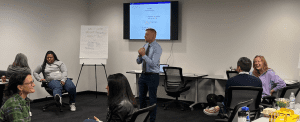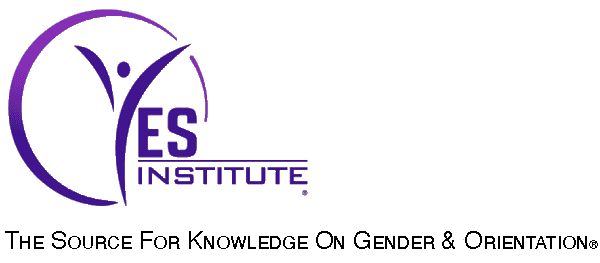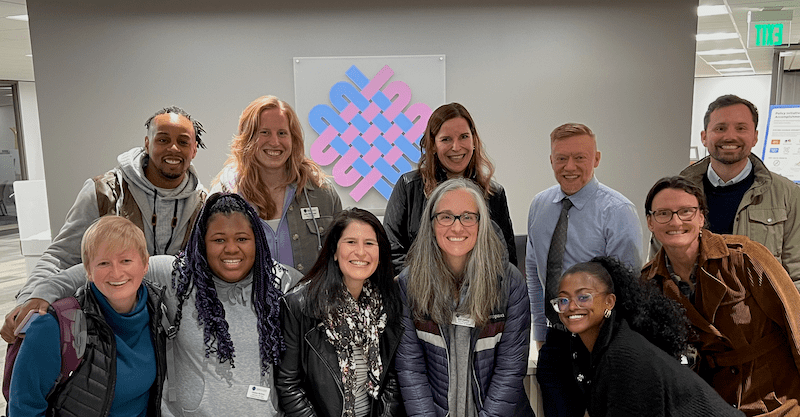Who here is “the Leader?”
A few months ago we were contacted and asked to lead an in-person communications course for The Center for Children and Youth Justice (CCYJ) in Seattle, Washington. As are so many organizations, they are faced with the challenge of functioning in a hybrid workplace. This training gave them the opportunity to delve deeper into their own ways of listening and speaking and provided them with the all same tools to use when communicating with themselves and others. Participants were excited to use our communication model at home, work, with friends and family alike. After the course one of the participants shared:
“I had to complete a project and I asked for feedback, and I didn’t get any responses from my colleagues after sending emails. With no feedback, my final project I delivered was a bit lackluster. After this training, I now realize I could have used my voice and energy to really enroll my colleagues on how important their feedback was, and I now see new actions I could have taken to ensure I could present the strongest deliverable for our organization.”
Shortly after delivering that course, CCYJ requested us to create another training to be shared with their leadership; specifically around conflicts within the company that many are currently facing: managing hybrid employees, having uncomfortable conversations, and best practices for creating an authentic and responsible work environment. The participants also wanted to continue practicing their communication tools and receive feedback from our team.
Our Leadership in Action™ (LIA) course gives teams the tools to enhance their individual leadership and work more effectively together as a group. Through inquiry and small group discussions, professionals are able to discover powerful pathways to collaboration and effectiveness, even in moments of disagreement. We facilitated Part 1 of LIA to a hand-picked group of the leaders at CCYJ.
Participants asked questions such as, “How do I address conflict and make sure everyone’s voices are being heard without stepping on toes? How do I not avoid conflict and skip over some of the messy conversations? What tips do you have for having tough conversations and resolving conflict?” The breakout sessions provided the space to share their struggles in leadership, and one-on-one coaching.
When the distinction integrity was covered in the course, folks shared that they really grapple with the responsibility of being a leader. Some of them realized that they were reacting as victims in some situations, rather than being responsible for their own out of integrity., They reclaimed their power by accepting responsibility and not being at the affect of someone or something else.
Another participant vulnerably opened up and expressed the challenges for them of cleaning up after making a mistake. They realized through this course that they were omitting information so as to not create a deadline to hold themselves accountable to. “If I don’t say it, I can’t be held responsible for it.” Examining integrity really had them reflect on their own actions and sometimes inactions. When they openly shared what was there for them, it provided access for others to open up. That’s when they could see the obvious actions to take..
“I feel I’ve deepened my relationship with myself & my strengths/growth areas. This clarified my growth/responsibility mindset.”
“Taking action can look like admitting that you don’t know what to do next. Take action. Gold.”
“I feel I was able to sharpen my perspective on myself & how I show up personally and professionally. The distinctions were amazing! I would love to put them into practice.”
“Excellent follow-up on the initial communication training we did. Loved seeing how those concepts apply to leadership.”
“My biggest takeaway was moving from victim to response-ability mindset. Also how communication is key, and not everything can be effectively said through an email.”
“The building of trust and commitment to a shared goal is vital.”
One participant noted that the professional and personal development was an impactful part of this course:
“Staff being able to discover tools and consider that leadership is action and they are all leaders was very powerful. For myself I see the slippery slope of agenda vs purpose and so many places where I don’t keep my word.”
When the distinction Purpose was discussed, one of the leaders raised her hand and shared about her purpose as a Mom. A few years ago, she was trying to get her daughter educational support after finding out she had dyslexia. It turned out that she eventually had to mov to a different state, and it was her purpose that motivated her to take action for her daughter, to have an accepting and uplifting school environment.

Being reminded of our common purpose often removes roadblocks and has us move from a victim mentality to one of responsibility. At the same time empowering us to make choices at work, at home, and within our community that works towards a common purpose.
Folks completed the course stating that they went from feeling powerless before the course, to taking ownership, and being a leader and realizing that they do influence and empower their team members, with every action, inaction and communication.
To learn more about YES Institute’s professional development courses and consultation, visit out our website.

